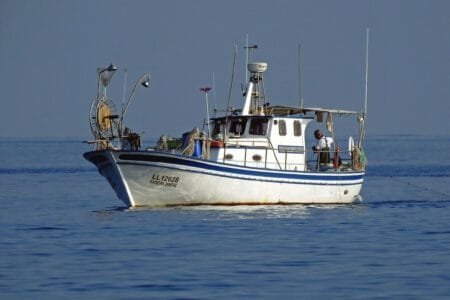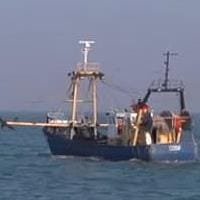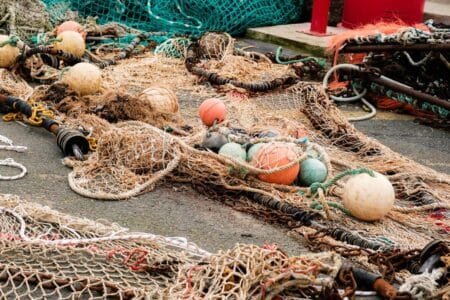The European Commission adopted on 28 August its proposal for the 2024 fishing opportunities for the Baltic Sea in response to a scientific assessment that indicates several fisheries are in a dire situation.
Advertisement
Fishing situation of the Baltic Sea
What are the fishing opportunities? Why is the Commission proposing fishing opportunities for the Baltic Sea?
Every year, the European Commission proposes fishing opportunities for all the EU sea basins, including the Baltic Sea. Also called total allowable catches (TACs), fishing opportunities are catch limits for most fish species, based on scientific advice.
Once agreed by the Council of the European Union, TACs are shared in national quotas that determine how many fish each EU country is allowed to catch in a given year. Quotas can be exchanged among EU counties.
What is the situation of the Baltic Sea and how is the Baltic Multiannual Plan contributing to the management of Baltic Sea fisheries?
The Baltic Sea is fragile, especially due to its shallowness, limited connection with the ocean and slow water circulation. The Baltic Multiannual Plan addresses stock management and fishing mortality from fisheries. It constitutes the right instrument to manage fisheries’ effects on stocks. However, actions to address the wider ecological situation are urgently needed.
The current situation is difficult for fishermen and women as formerly important commercial stocks (western and eastern cod; western, central and Bothnian herring; and salmon in the southern Baltic Sea and rivers) are also under additional pressures, notably from habitat loss due to a degradation of the environment both in inland waters as well as in the Baltic Sea itself. Member States will have to ensure they implement EU environmental legislation to improve the state of the Baltic Sea. A better enforcement of these measures is necessary to see improvements in fish stocks’ recovery.
Concerned by the situation of the Baltic Sea, the European Commission is organising the second edition of the Our Baltic Conference in Palanga, Lithuania, on 29 September 2023. This high-level event will bring together ministers from the eight EU countries surrounding the Baltic Sea (Denmark, Germany, Estonia, Latvia, Lithuania, Poland, Finland and Sweden). Virginijus Sinkevicius, Commissioner for Environment, Oceans and Fisheries, and Ministers will look at what has been achieved since the first Our Baltic Conference in 2020 and what still needs to be done.
Eastern Baltic cod
Why is the Commission not proposing a TAC for eastern Baltic cod for 2024?
Despite the measures of recent years, scientists estimate that the condition of the stock has not improved. They, therefore, advise a continued stop for all catches of eastern Baltic cod for 2024. Hence, the Commission proposes to extend the current measures for 2024, except for the derogation for certain herring fisheries from the cod spawning closure as the Commission proposes to close these herring fisheries.
Regarding the TAC for unavoidable by-catches, the Commission asked the International Council for the Exploration of the Sea (ICES) to update its information from 2020. The Commission will update its proposal in light of the new ICES information.
In 2019, scientists discovered that the stock of eastern Baltic cod was in a worse state than previously expected and emergency measures had to be taken as this fish stock had been below safe biological limits for several years. The Commission therefore urged Member States to take action, and prohibited fishing for cod in the most concerned areas for the rest of the year.
In 2020, based on scientific advice, the Commission proposed, and the Council agreed, to set a significantly lower TAC, which can only be used for cod by-catches. In 2021, again based on scientific advice, the TAC for unavoidable by-catches was reduced. In 2022 and 2023 the measures remained unchanged.
Why is the spawning closure for eastern Baltic cod maintained?
Science states clearly that such closures can have benefits for the stock, which cannot be achieved by a TAC alone. Scientists mention as an example for additional benefits that a closure may allow cod to spawn without being disturbed and that this can lead to producing more young cod. Eastern Baltic cod is in a very poor condition, below the limit level. The Baltic Sea Multiannual Plan enables taking exceptional measures to remedy critical situations as quickly as possible.
Against this background, it is appropriate to maintain the closure covering the entire peak spawning time in all potential spawning areas and in the main area from where cod migrate to the spawning grounds. At the same time, any disturbing fishing activity is prohibited.
Why is the prohibition of recreational fishing for eastern Baltic cod maintained?
Since the eastern Baltic cod is in extremely poor condition, scientists advised to stop all catches, including recreational. This is also coherent with the Baltic Sea Multiannual Plan, which provides that when the size of a stock is below safe biological limits, further measures have to be taken to remedy the situation as quickly as possible. We therefore propose to continue this prohibition, already applicable since 2020.
Are the measures put in place since 2019 giving the expected outcome, andwhat is the Commission’s strategy going forward?
While it seems that so far the stock has not yet responded to the various measures, two relevant aspects need to be taken into account in the current context. First, conservation measures need time to show effects, especially when a stock is in such a bad condition as the Eastern Baltic cod stock. Second, there are broader ecosystem-related factors such as rising water temperatures, pollution, diseases and oxygen depletion that affect cod stock, limiting its recovery capabilities.
In September 2020, the Commission held a high-level conference where the Ministers responsible for Environment and Fisheries from the Member States across the Baltic Sea region signed a joint declaration to take a series of measures to address the ecosystem issues of the Baltic Sea. A follow-up conference will be held on 29 September 2023 in Palanga, Lithuania, to take stock of the advances made and to tackle additional issues. Finally, the Commission has asked the Member States to work on other measures such as developing gears for the flatfish fisheries, which could substantially reduce cod by-catches.
Western Baltic cod
Why is the Commission not proposing a TAC for western Baltic cod for 2024?
The ICES advice suggests decreasing western Baltic cod fishing opportunities by 97%, to 24 tonnes. The Commission therefore proposes to maintain the existing measures for 2024 except for the derogation for certain herring fisheries from the cod spawning closure, as the Commission proposes closing these herring fisheries. In addition, the Commission proposes closing recreational fisheries.
Regarding the TAC level for unavoidable by-catches, the Commission asked ICES for additional information, notably regarding the flatfish fisheries. The Commission will eventually update its proposal.
Why is the Commission proposing to close the recreational fisheries for western Baltic cod?
In 2022, recreational fisheries were limited to a bag limit of one cod per angler per day. ICES estimates that the recreational catches in 2022 amounted to 288 tonnes, representing about 70% of total commercial and recreational catches. The ICES advice is for a total of 24 tonnes in 2024. For this reason, it is not possible to maintain any recreational western Baltic cod fishery.
Western herring
Why is the Commission proposing to close the targeted western herring fishery?
As in the previous five years, ICES advises to stop all fishing so that the very depleted western herring stock can recover. For such situations, the Baltic Multiannual Plan indicates that measures need to be taken to ensure the rapid return of the stock to sustainable levels. In addition, the TAC level needs to ensure that biomass will not fall below the minimum levels.
The Commission, therefore, proposes to close all the targeted fisheries, including small-scale coastal fisheries. Regarding the TAC level for unavoidable by-catches, the Commission asked ICES for additional information. The Commission will update its proposal after taking into consideration the latest scientific data.
How does the Commission intend to help western Baltic herring recover?
ICES has been advising a stop of the western herring fishery for several years already. The EU, therefore, has drastically reduced the quotas in the Baltic Sea over the past few years. However, the difficulty is that western herring is not only present in the Baltic Sea it also migrates into the Skagerrak and the eastern North Sea. Most of the catches are now actually taken in those areas.
For 2024, ICES estimates that only 10% will be caught in the Baltic Sea, while 90% will be caught in the Skagerrak and the North Sea. This means that catches in the Skagerrak and in the North Sea have to also significantly decrease for the stock to recover. However, fisheries in these areas are managed jointly with Norway and the UK. Therefore, the Commission will discuss with both Norway and the UK the need to keep the fishing pressure in the Skagerrak low and thus avoiding a negative impact on western Baltic herring.
Other stocks
Why is the Commission not proposing to close the targeted Bothnian and central Baltic herring fisheries?
The biomass of the Bothnian herring stock fell below healthy levels, probably because of low recruitment in recent years and because older herring have become smaller. For central Baltic herring, scientists made an in-depth assessment this year to know more about all factors affecting this stock. The result is that the stock is estimated to have been around or below safe biological limits since the early 1990s.
For both stocks, ICES estimates that biomass will not recover above healthy levels before 2025, and that there is a risk for both stocks to respectively fall or stay below safe biological limits with a probability of more than 5%. The Commission therefore proposes to close the targeted fisheries. Regarding the TAC level for unavoidable by-catches, the Commission asked ICES for additional information. The Commission will eventually update its proposal.
Why does the Commission propose to decrease the Riga herring TAC by 20%?
Some central Baltic herring migrate into the Gulf of Riga and ICES suggests adding that herring to the Riga herring TAC. While this has always been done in the past, this year the Commission proposes not to add them as it would be inconsistent with its proposal to close the targeted central Baltic herring fishery.
The resulting catch advice from ICES for Riga herring is -23%. Since this stock is healthy, the Commission proposes to use the flexibility provided by the Baltic Multiannual Plan to limit the decrease to -20%.
Why does the Commission not propose a TAC for plaice and sprat?
Plaice and sprat are caught in mixed fisheries together with other species that the Commission proposes closing plaice with cod, and sprat with herring, mostly central Baltic herring. The by-catches of cod and herring should be kept as low as possible. The Commission therefore asked ICES for additional information about unavoidable by-catches. The Commission will eventually update its proposal.
Why does the Commission propose to decrease the catches for main basin salmon?
The various salmon populations in the main basin have been in different conditions for a long time. Some populations have been healthy, but others have been weak. In 2020, ICES advised that maintaining the existing mixed-stock fishery in the entire main basin would impair the ability to achieve healthy levels for all salmon populations. In 2021, ICES advised to close all commercial and recreational salmon fisheries in the main basin. However, it considered that it would still be possible to maintain a targeted salmon fishery during the summer in the coastal waters of the Gulf of Bothnian and the Åland Sea. The Council decided to follow this approach. This year, ICES considers that the targeted fishery could only continue in the Bothnian Bay and that the catch should be reduced. The Commission proposes to follow the ICES advice.
Source: European Commission





